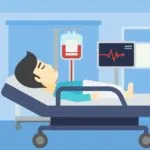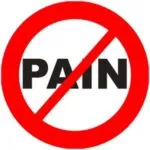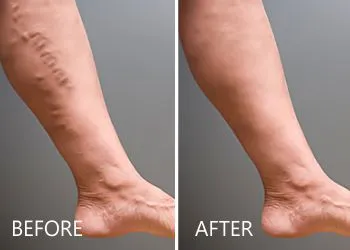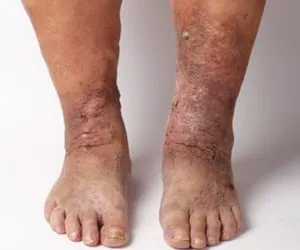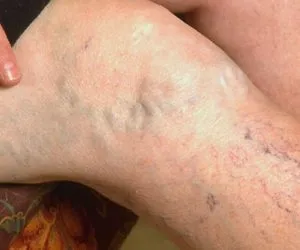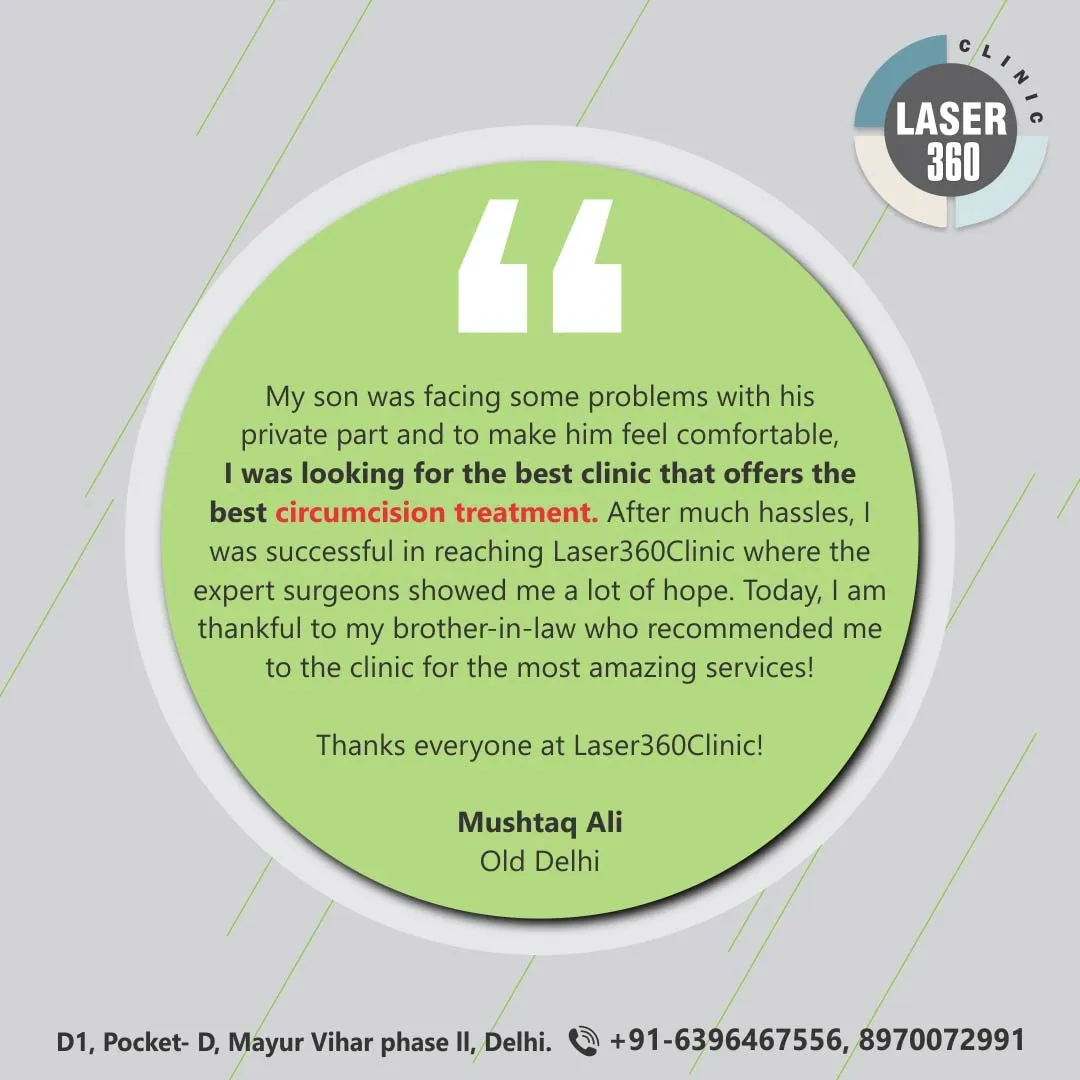Varicose veins are enlarged, swollen, and twisting veins, often appearing blue or dark purple. Varicose veins are a common condition caused by weak or damaged vein walls and valves. More than 23 percent of all adults are thought to be affected by varicose veins.
Varicose veins are caused by increased blood pressure in the veins. Varicose veins happen in the veins near the surface of the skin (superficial).
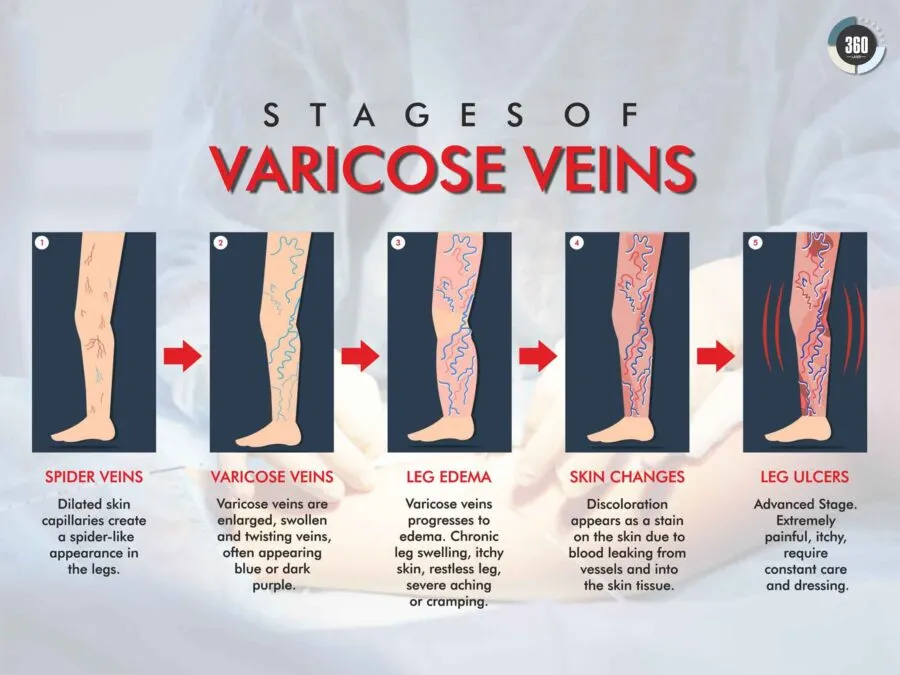
 ENDO VENOUS LASER TREATMENT (EVLT) is a new method of treating VARICOSE VEINS without surgery. Instead of tying
and removing the abnormal veins, they are heated by a laser. The heat kills the walls of the veins and the body
then naturally absorbs the dead tissue and the abnormal veins are destroyed.EVLT is a DAY CARE PROCEDURE. Surgery lasts only 30-40 minutes for single leg. You may go home the very same day.
EVLT procedure is performed under LOCAL ANESTHESIA. Very small incision is required to introduce laser fiber
inside your veins. NO SUTURE is required afterwards. No cuts, No stripping, and NO SUTURES lead to a PAINLESS and
BLOODLESS surgery experience. Laser radial fiber is inserted into vein through a catheter having just about 2 mm
diameter making the procedure completely MINIMALLY INVASIVE. Extremely small incision and advanced laser technique
leads to a SCARLESS Varicose Veins Surgery.
ENDO VENOUS LASER TREATMENT (EVLT) is a new method of treating VARICOSE VEINS without surgery. Instead of tying
and removing the abnormal veins, they are heated by a laser. The heat kills the walls of the veins and the body
then naturally absorbs the dead tissue and the abnormal veins are destroyed.EVLT is a DAY CARE PROCEDURE. Surgery lasts only 30-40 minutes for single leg. You may go home the very same day.
EVLT procedure is performed under LOCAL ANESTHESIA. Very small incision is required to introduce laser fiber
inside your veins. NO SUTURE is required afterwards. No cuts, No stripping, and NO SUTURES lead to a PAINLESS and
BLOODLESS surgery experience. Laser radial fiber is inserted into vein through a catheter having just about 2 mm
diameter making the procedure completely MINIMALLY INVASIVE. Extremely small incision and advanced laser technique
leads to a SCARLESS Varicose Veins Surgery.
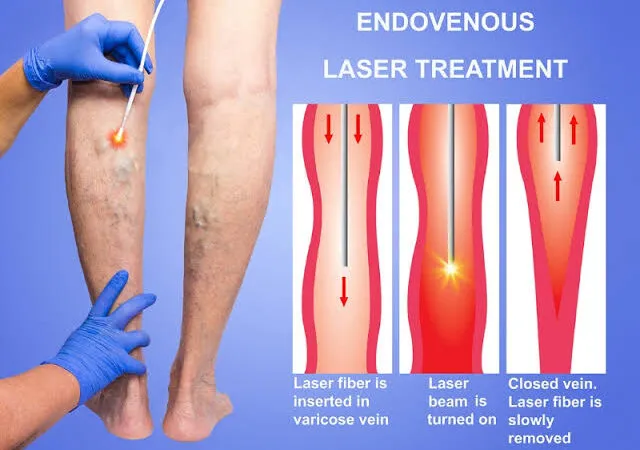 An ultrasound scan is performed and the varicose veins to be treated are marked with a pen. You lie on a couch and your leg is cleaned and covered with drapes. Depending on which veins are to be treated, you may be on your back or your front. All these steps are guided by ultrasound scanning. Endovenous means inside the vein, so the next thing the doctor has to do is to get inside your vein. A small amount of local anesthetic is injected into the skin over the vein and a needle inserted into it. A wire is passed through the needle and up the vein. The needle is removed and a catheter (thin plastic tubing) is passed over the wire, up the vein and the wire removed.
A laser fiber is passed up the catheter so its tip lies at the highest point to be heated (usually your groin
crease). A large quantity of local anesthetic solution is then injected around the varicose vein through multiple tiny needle pricks. All staff and the patient put on laser safety specs as a precaution. The laser is then fired up and pulled down the vein over about 5 minutes. You will hear a warning buzzer ringing and may smell or taste burning but won’t feel any pain. If you’re having both legs treated the process is repeated on the other leg. The laser and catheter are removed and the needle puncture covered with a small dressing.
The treatment takes about 20-30 minutes per leg. You may also have some foam sclerotherapy or some avulsions
undertaken and a compression stocking is then put on.
An ultrasound scan is performed and the varicose veins to be treated are marked with a pen. You lie on a couch and your leg is cleaned and covered with drapes. Depending on which veins are to be treated, you may be on your back or your front. All these steps are guided by ultrasound scanning. Endovenous means inside the vein, so the next thing the doctor has to do is to get inside your vein. A small amount of local anesthetic is injected into the skin over the vein and a needle inserted into it. A wire is passed through the needle and up the vein. The needle is removed and a catheter (thin plastic tubing) is passed over the wire, up the vein and the wire removed.
A laser fiber is passed up the catheter so its tip lies at the highest point to be heated (usually your groin
crease). A large quantity of local anesthetic solution is then injected around the varicose vein through multiple tiny needle pricks. All staff and the patient put on laser safety specs as a precaution. The laser is then fired up and pulled down the vein over about 5 minutes. You will hear a warning buzzer ringing and may smell or taste burning but won’t feel any pain. If you’re having both legs treated the process is repeated on the other leg. The laser and catheter are removed and the needle puncture covered with a small dressing.
The treatment takes about 20-30 minutes per leg. You may also have some foam sclerotherapy or some avulsions
undertaken and a compression stocking is then put on.
| FEATURES | LASER VARICOSE VEINS SURGERY | OPEN SURGERY |
|---|---|---|
| Cuts and Wounds | No | Yes |
| Bleeding due to Cuts and Stitches | Very Less | More Bleeding |
| Diet Restrictions | No | Yes |
| Success Rate | High | Low |
| Risk of Infection | Very Less | High |
| Rest after Surgery | Can Resume Work | 1-2 Months Rest |
| Recovery | Fast | Time Taking |
| Pain | Painless | Painfull |
| Recurrence | No | Yes |
